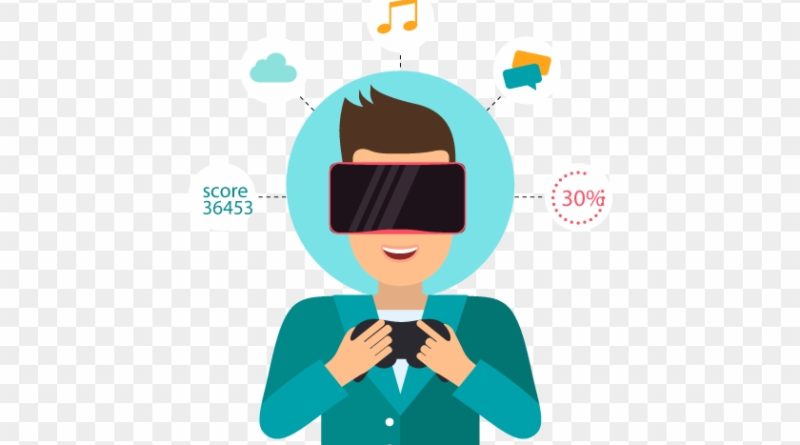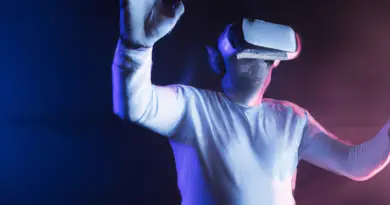VR Development: A Beginner’s Guide to Creating Virtual Reality Content
Virtual reality (VR) is a 3D space simulation that you can experience through a headset. You can look around and move with some headsets. Immersive VR is a highly sought-after technology because it controls your entire vision as well as your ability to move and look around in the real world.
The VR Era Is Quickly Approaching
When the world’s largest technology companies (Google, Facebook, Microsoft, and Apple) invest billions of dollars in VR development technologies, you know something big is about to happen. According to experts, this VR revolution will be bigger than the introduction of the mobile phone, and the first company to design a consumer virtual reality product that is widely adopted will win big.
So Why Designers Should Be Concerned?
Designers should be concerned because the market that has provided them with consistent work for decades is about to shift to a new paradigm of immersive 3D content. Sound, touch, depth, and emotion will all be essential components of the VR experience, rendering even the most innovative 2D screen experiences boring and dated.
How to Begin With Virtual Reality Design
This article was written to help people become acquainted with the processes, tools, and principles involved in VR development. Let’s get started!
The Most Effective Way to Learn About VR Design
In virtual reality, you are not just an observer, but also a participant in the story, with the ability to influence its outcome. Isn’t that cool? So, before you even consider designing for VR, you must first experience it and fully comprehend how it works. Google Cardboard is a great entry point for newcomers because it is inexpensive ($15) and works with any smartphone. Oculus Rift or HTC Vive are the best options for people who want the best quality experience and are willing to pay for it.
Both the Oculus and the Vive have natural hand controllers that allow you to interact with your virtual spaces. Tilt Brush and Google Earth VR are excellent interactive experiences to begin with.
Think Outside the Box
After you’ve got a sense of how VR feels, consider what kind of experience you want to create. Because every viewing device is a rectangle, we’ve all grown accustomed to designing for rectangles. When you’re in immersive 360 spaces, your surroundings are limitless. Do you want to make a first-person shooter? Perhaps a VR educational app? An interactive film? Whatever it is, start small and consider what you will need to launch an MVP.
Ideas for Sketches
Starting to design your VR experience is similar to starting to design applications, a web or mobile product. User personas, conceptual flows, wireframes, a VR prototype, and an interaction model are all required. Consider the following fundamental questions as you brainstorm design concepts:
- Where do people begin?
- What options are available to guide people without overwhelming them?
- Do you want to err on the side of too much guidance, or do you want to create a minimalist environment that doesn’t overwhelm the user with too many options?
People should not be expected to know what to do or where to go. Slow and progressive familiarization, visual cues, and software guidance should all be used to assist the user.
Do Not Recreate UI Patterns
VR apps with simple user interfaces, similar to those found on wearables, phones, tablets, and computers, will make VR more accessible to the general public. It’s fun to come up with new interactions, but it raises the user’s learning curve. VR designers, like those who create 2D interfaces, should use size, contrast, and color to indicate hierarchy. In VR, size is determined by the distance between the user and the content, so it’s critical to understand the scale of the content and the appropriate viewing distance.
Knowing how large to design your type, for example, is difficult, but fortunately, there are many precedents in the real world. When designing content for VR, the same considerations that are made for print design (billboards, posters, books) are useful.
Consider how you currently interact with a touchscreen monitor. Swiping, pinching to zoom, and long tapping to bring up more options are all patterns that we have all grown to understand. All of these factors should be considered in VR as well. I’m confident that as more designers enter the VR field, there will be more minds to create and test new UI patterns, allowing the industry to progress.
Tools
Paper and Pencil
It’s critical to get your ideas down on paper before diving into the software. It’s quick and cheap, and it allows you to express ideas that would take hours to express in software. This is especially important in 3D because transitioning from sketches to high-fidelity can be much more expensive than in 2D.
Software
Some designers begin with tools they are already familiar with, such as Sketch, while others use it as an opportunity to learn new tools. It is entirely dependent on the engine you intend to use to build your app. If you’re making a 3D game, you should use Unity or Unreal Engine. Cinema 4D and Maya are also popular, but they are mostly used for complex animations and renderings.
Frameworks
When designing for VR, there are three major frameworks to choose from Mozilla A-Frame, Daydream VR, and Unity VR/Unreal SDK.
- Mozilla A-Frame is a Web VR platform that can be used with Google Cardboard, Samsung Gear, and Oculus Rift.
- Daydream VR is designed for mid-range VR and only works with mobile phones.
- Unity VR/Unreal SDK is designed for high-end headsets such as the Oculus Rift, HTC Vive, and HoloLens (AR).
Principles of Experience
When designing for VR, you are designing for the capabilities of people as well as the capabilities of the system. As a result, it is critical that you understand your users and the issues that may arise while they are experiencing VR.
Physiological Convenience
The most important consideration is creating a comfortable experience for people (and a difficult one). If you’ve ever used a VR headset for more than 20 minutes, you’ve probably felt fatigued or nauseated. Because your body is stationary while viewing a moving environment, VR can confuse your brain. A fixed reference point, such as a horizon line or a dashboard that follows you as you move, can help alleviate nausea. If your app has a lot of movement—accelerating, zooming, jumping—the users must be able to control it or they will get sick.
Environmental Convenience
People can easily become uncomfortable in small, large, or high spaces (claustrophobia/ agoraphobia/ vertigo), just as they do in the physical world, so understanding scale as a VR designer is critical. Users may become disoriented if you design an overly large space. Users may become claustrophobic if the space is too small.
There are numerous methods for guiding visitors through your virtual environment. Non-spatial methods such as audio and light can be especially beneficial. Light can be used to reveal a path to follow and audio can be used for spatial positioning. For years, the gaming industry has used these techniques to help guide people through their journeys.
Ergonomics
It’s exciting to think about creating futuristic interfaces like we’ve seen in Hollywood blockbusters like Iron Man or Minority Report when first designing for VR, but the reality is that those UIs would be exhausting if used for more than a few minutes. The diagrams below help to illustrate the zones of comfortable range of motion:
We’ve all experienced “text neck” syndrome at some point in our lives (the soreness felt from looking down at our smartphones for extended periods). Poor posture can put up to 60 pounds of pressure on your spine, depending on how far you lean over. This can result in long-term nerve damage in your spine and neck.
As VR becomes more popular, it will be critical to establishing healthy habits and movement standards. Rather than trying to adapt to the limited interactions supported by our current technologies, our interactions with VR platforms will need to be as natural and intuitive as possible. This “natural computing” paradigm, which allows us to interact with the digital world in the same way we interact with the physical world, will allow us to interact with the digital world in the same way we interact with the physical world.
Methods of Input
You can’t see what’s in your hands when you’re wearing a VR headset. Unlike the gaming controllers we’ve grown accustomed to (Playstation, Xbox, and Wii), VR hand controllers must be usable in “blind mode.” Each platform offers unique ways to interact with the VR environment. Google Cardboard, for example, has only one button, whereas Oculus and HTC Vive both have two hand controllers with six degrees of freedom. The controllers improve the VR experience by allowing users to pick up objects and physically interact with others.
Sound
While sound can be distracting when using the web or mobile apps, it is an essential component of VR development. Consider the phenomenon of synesthesia, which occurs when one sense is stimulated and another sense is automatically activated. For example, you might smell something and get the impression that it tastes good. This also applies to sound. Because tactile feedback in VR is still lacking, the sound is an excellent way to provide feedback when users touch objects.
3D Sound, also known as Holophonic Sound, is still in its infancy, but it will transform how we experience VR. We are all accustomed to stereophonic sound, which provides sound from two channels (left/right), but holophonic sound allows us to distinguish whether the sound is coming from above, below, or behind us.
Consider the last time you were outside and heard an airplane. You look up naturally, right? This sound experience in VR will be what makes it truly immersive.
VR Design Principles
It is recommended to look into a few resources that will help you gain a better understanding of how to design for VR. The best places to start are Google VR Guidelines, Oculus VR Best Practices, and VR UX. After reading through these resources, you’ll be well ahead of the competition.
Consider, Investigate, and Create
What makes designing for VR so exciting right now is that there are very few established conventions and very few experts — it’s a completely open field! Start designing for VR now and you could be an expert in a year.
If you have prior experience in gaming or architecture, you will have an advantage. This industry transition from 2D to 3D represents not only a fantastic opportunity to rethink paradigms of human-computer interaction, but also to be a part of the creation of an entirely new field.
It is critical to constantly reflect on the new opportunities in this industry, just as it is in any new field. In this space, there are limitless opportunities to innovate, improve, and create entirely new experiences. So think big, be critical, and get out of your 2D thinking mode!




